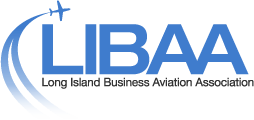
Joseph Loccisano LIBAA President
Just four years ago Governor Andrew Cuomo signed into law legislation that allowed New York’s aviation industry to compete equally with neighboring states that had been siphoning off jobs, investment, and state revenue by offering tax incentives to the multibillion dollar general aviation sector.
Now some Albany lawmakers are condemning general aviation as the exclusive purview of the wealthy, blind to the reality that it isn’t about the multimillionaires, but about the hundreds of thousands of people employed by general aviation.
The role of aviation in New York can’t be overstated. It has represented over $50 billion in annual economic activity; employed more than 394,500 state residents; and generated $18 billion in payroll, and $4.5 billion in State and local tax revenue annually. And after the Governor signed the Aviation Jobs Act those numbers only increased as general aviation was no longer flying into New York with the burden of job-killing taxation or inadequate capital investment in aviation infrastructure.
If Albany’s misguided attack on general aviation succeeds, New York will once again be without economic air cover. We will be forced to return to an era when the state lost nearly 700 based aircraft due in large part to the more favorable tax treatment, aggressive marketing strategies, and airport development strategies undertaken by states that border our own. Typically, NetJets, a global leader in fractional aircraft ownership, with over 400 jets in the U.S., had avoided New York as a state to conduct ownership closings and aircraft transactions even though we have been the primary destination for NetJet aircraft.
In 2004, New York acknowledged that neighboring states were cleaning our skies of revenue. At that time the aviation industry successfully advocated for sales tax relief for the maintenance and repair of general aviation aircraft. That exemption proved to be a tremendous success, resulting in an expansion of aviation maintenance and repair businesses, jobs, and tax revenues here in New York. The Aviation Jobs Act has only strengthened and expanded that economic rate of return.
At Long Island’s key airports, Republic and Long Island MacArthur, The Aviation Jobs Act has provided the means to strategically strengthen those aviation assets, allowing them to become far greater contributors to our local economy. At Republic alone, Sheltair cut the ribbon on a new $55-million aviation complex that, in turn, creates additional jobs, investment, and broader New York State access to global markets through the state’s busiest general aviation airport.
The New York Aviation Management Association (NYAMA) has reported that the state’s Department of Transportation estimates that one corporate aircraft can generate $1 million in spending annually and five direct jobs at the airport where it locates. These direct jobs include aircraft and avionics mechanics, airfield operations specialists, fuel suppliers, cleaning crews, pilots, co-pilots, flight engineers, and hangar and other facility construction jobs, to name a few of the beneficiaries. Indirect employment includes jobs in hospitality, ground transportation, marketing, tourism, catering, and many other sectors.
If the Aviation Jobs Act is recalled it will represent a serious setback, not just for the state’s general aviation community, but for the hundreds of thousands of New Yorkers who depend on this vibrant, successful, well-paying sector for their careers. It will send a devastating message to the business community that the only incentive New York-based aviation companies have is to leave the state. At a time when Albany is facing multibillion dollar deficits, the idea that a proven revenue generator would be grounded is unfathomable.
About LIBAA
The Long Island Business Aviation Association, Inc. is a not-for-profit organization that was incorporated in 2001 to act as a collective voice for the business aviation community on Long Island, and to assist its members in all aviation related matters. It is made up of a broad cross section of aviation related businesses and aircraft operators, and as an organization, stands ready to advance the cause of business aviation at all Long Island Airports. LIBAA has developed and grown from modest beginnings to become a respected and key part of the business aviation community – and aviation on Long Island as a whole. The Association is squarely focused on the development and management of safe, credible, efficient, and sustainable activity in our local area.



